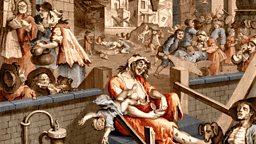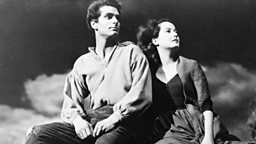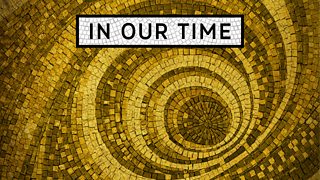Unexpected Historical Delights From In Our Time
There’s always a plethora of fascinating facts, inspirational discussion and spellbinding rhetoric in every episode of the majestical Βι¶ΉΤΌΕΔ knowledge juggernaut that is In Our Time. But there are some episodes that just warm the heart, titillate the grey matter and push all the right buttons a little more vigorously than others.
We gathered together a collection of editions that you may have missed or overlooked that are guaranteed to bring unfettered enjoyment.
The Stephensons

A thoroughly inspiring story of British grit, graft and ingenuity.
There had been tracks used in the mining industry since the 16th Century and static engines for pumping were becoming more common during the Industrial Revolution. But it took the foresight of George Stephenson, the ‘Father of the Railways’, to merge the two and develop a moving engine that led to the establishment of the railways which would soon dominate the globe.
His son, Robert, eclipsed him with his engineering skill and capacity to invent. Together they produced Locomotion No1 for the Stockton and Darlington Railway in 1825 and then the Rocket in 1829 and by doing so changed the world.
Listen to In Our Time: George and Robert Stephenson
Then try these:
Ada Lovelace, Isambard Kingdom Brunel, The Royal Society and British Science
The Gin Craze

The reasons why 18th Century Britain suddenly became obsessed with gin are fairly remarkable, especially to contemporary thought.
Most of the country were steadfast beer drinkers, but all this changed with the ascension of William of Orange to the throne in 1689. He wanted to foist Dutch gin on the public, viewed as a Protestant alternative to Catholic, and so inferior, brandy. Beer too was suddenly taxed and Londoners in particular were soon downing a couple of pints of gin a week.
By the 1730s there were around 1500 gin distilleries in London. But the craze soon got out of hand, as illustrated by Hogarth’s famous print Gin Lane. And efforts to stop the populace drinking gin, and stem the crime wave and general debauchery it was connected to, led to widespread dissent.
Listen to In Our Time: The Gin Craze
Then try these:
Marie Antoinette

Marie Antionette remains one of the most recognisable names in history - but has this famous figure been unfairly maligned?
She became the symbol for everything wrong with pre-revolutionary France, especially among the citizens she ruled over. She was seen as widely decadent, out of touch and a foreigner who bankrupted the nation.
But how much of this reputation is derived from pro-revolutionary propaganda from that era, created to justify her execution? And to what extent was she merely an unfortunate pawn in a dynastic battle?
Listen to In Our Time: Marie Antoinette
Then try these:
The Divine Right of Kings, Eleanor of Aquitaine, Montesquieu
Wuthering Heights

It’s considered one of the great English novels. To some, it’s the very greatest. Wuthering Heights is a complex story of love, obsession and revenge set on the bleak Yorkshire moors. But how did a kindly curate’s daughter, Emily Bronte, come to write a work that shocked contemporary readers with its violence and anger?
Alongside her sisters Charlotte and Anne, the Brontes were responsible for some of the most acclaimed novels in the English language, but where did this prodigious talent come from and how much did the tragedy that the family appeared to be steeped in influence the creative power of the clan?
Listen to In Our Time: Wuthering Heights
Then try these:
Feathered Dinosaurs

It’s remarkable that despite the centuries of research and the thousands and thousands of fossils that have been excavated, we are still discovering fundamental things about dinosaurs.
Experts were sure that these prehistoric beasts were solely related to reptiles: the word ‘dinosaur’ comes from the Greek for ‘terrible lizard’. But the discovery of fossilised remains with unmistakable feather evidence during the last century completely altered palaeontology.
Some dinosaurs were obviously feathered and those that survived the great extinction event evolved into the birds we see around us today. But what was the purpose of feathers on these creatures and how did they alter the traditionally conceived appearance of the dinosaur?
Listen to In Our Time: Feathered Dinosaurs
Then try these:
Carl Friedrich Gauss

It may not be a name that trips off the tongue, but to anyone working in the field of mathematics, the name of Gauss tends to send the heart aflutter.
Despite being born into poverty with parents who couldn't afford an education, once he’d reached his teenage years he’d solved many of the mathematical quandaries that had baffled experts since antiquity.
By the time he died in 1855 he’d been recognised for his advancements in number theory, predicting the location of asteroids, developing Euclidean geometry and inventing the first telegraph, amongst many other achievements. His influence on the calculations surrounding the Theory of Relativity was overwhelming, as Einstein acknowledged.
How did one so humble become such a leading figure in his field and what would a world without Gauss have been like?
Listen to In Our Time: Carl Friedrich Gauss
Then try these:
James Clerk Maxwell, Goethe and the Science of the Enlightenment, Thomas Edison
More from In Our Time
-
![]()
In Our Time Podcast
Every episode of In Our Time is available to download.
-
![]()
The In Our Time Listeners' Top 10
The top ten programmes as suggested by In Our Time's audience, to mark the 750th edition.
-
![]()
In Our Time: Culture
Popular culture, poetry, music and visual arts and the roles they play in our society.
-
![]()
In Our Time: Science
Scientific principles, theory, and the role of key figures in the advancement of science.




